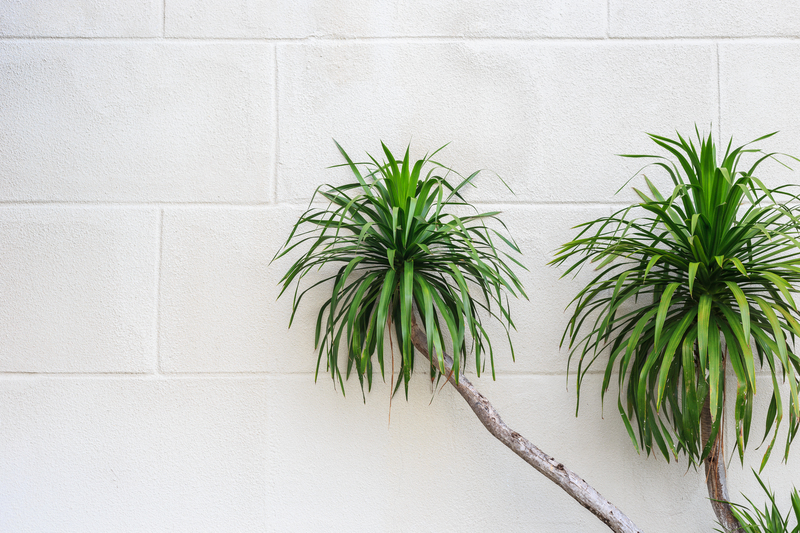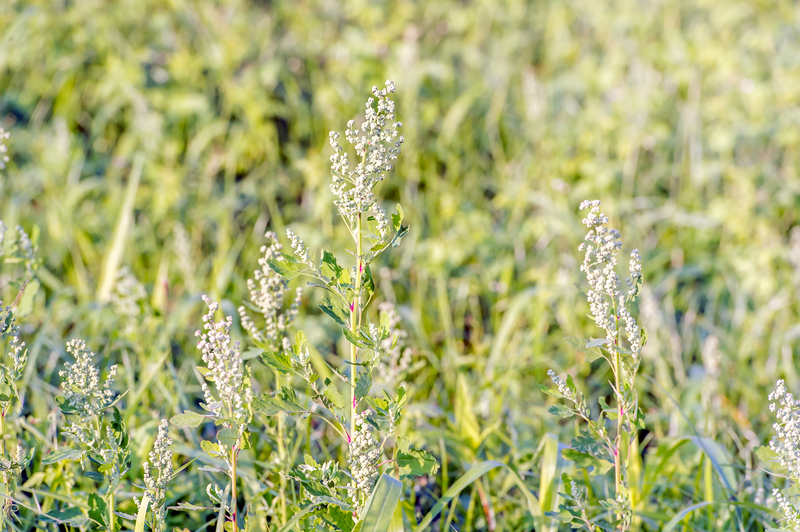Container Gardening: A World of Possibilities in Limited Spaces
Posted on 13/06/2025
Container Gardening: A World of Possibilities in Limited Spaces
Container gardening is transforming balconies, patios, rooftops, and even windowsills into vibrant, blossoming havens. For those dealing with limited square footage, container gardening offers endless possibilities, enabling anyone to cultivate a lush oasis, grow fresh vegetables, or flaunt colorful flowers--no backyard necessary. In this comprehensive guide, we'll explore the ins and outs of container gardening, its remarkable benefits, creative layout ideas, and practical tips to help you thrive in any tiny spot you call home.
Why Choose Container Gardening?
Container gardening is more than a trend--it's a clever and sustainable practice that adapts beautifully to modern living. Whether you're a city dweller with a tiny balcony or a suburbanite seeking convenience, potted plant gardens are thriving in places where traditional gardening cannot. But what exactly makes gardening in containers so appealing and effective?
- Maximized Space: Utilize every nook, from stairways to rooftops.
- Portability: Move your plants to capture sunlight or shelter them from harsh weather.
- Flexibility: Grow a wider variety of plants, regardless of native soil conditions.
- Accessibility: Perfect for seniors, people with mobility issues, and anyone unwilling to do heavy digging.
- Pest & Disease Control: Easily manage pests and diseases with physical separation and quick intervention.
- Year-Round Gardening: Bring pots indoors during unfavorable seasons for continuous cultivation.

Understanding the Basics of Container Gardening
Container gardening for small spaces starts with understanding what plants need to succeed within the limits of a pot, box, or tub. Here's how to set up your container garden for optimal growth:
Choosing the Right Containers
There's a dazzling array of containers available: terracotta pots, plastic troughs, ceramic planters, fabric grow bags, and quirky upcycled vessels like old buckets or baskets. Your choice depends on size, drainage, aesthetics, and what you want to grow.
- Size: Ensure your container is spacious enough for mature root systems.
- Drainage: Pots must have holes at the bottom to prevent root rot.
- Material: Consider weather resistance; plastic retains moisture better, while clay allows excess water to evaporate.
- Shape: Deeper pots are suited for root crops like carrots, while shallow ones work for herbs and leafy greens.
Quality Potting Soil
An essential rule of thumb: Never use garden soil in your containers. It compacts easily and may harbor pests. Always use high-quality potting mixes designed for containers. They're lightweight, well-draining, and often pre-mixed with slow-release fertilizers.
Location and Sunlight
Monitor your space to identify sun and shade patterns. Most vegetables and flowers prefer at least 6 hours of sunlight per day, while some herbs and shade-loving plants thrive in less bright conditions. Portable containers make it easy to adjust as seasons change.
Innovative Container Gardening Ideas for Limited Spaces
When dreaming big in small areas, creativity is your greatest asset. Here's how to design a stunning container garden for urban spaces:
Vertical Container Gardens
- Hanging Baskets: Suspend planters from ceiling hooks or railings to free up floor space.
- Wall Planters: Install shelves or wall-mounted pockets for herbs, trailing succulents, or annual flowers.
- Pallet Gardens: Upcycle old pallets, fill with soil, and insert plants between the boards for a rustic, vertical look.
Vertical container gardening is a smart way to maximize growing area in minimal square footage, turning blank walls or fences into living artwork!
Tiered and Stacked Gardens
Try arranging containers in tiers or on shelves, with larger pots below and smaller ones stacked above. This not only looks appealing but also serves practical purposes--tall plants won't shade smaller ones, and you can reach everything easily.
Rail and Window Box Containers
Perfect for balconies and apartment window sills, railing planters or window boxes are ideal for trailing flowers, lush greens, or edible herbs. They add instant curb appeal while optimizing even the tiniest ledge for plant life.
Choosing the Best Plants for Container Gardens
The art of selecting crops for your container garden involves matching your sunlight, climate, and container size with suitable plant varieties. Here are some top picks for vibrant small space gardening:
Edible Container Crops
- Herbs: Basil, parsley, thyme, mint, chives, and cilantro are easy and compact.
- Salad Greens: Lettuce, spinach, arugula, and kale grow quickly and require little space.
- Compact Vegetables: Try dwarf tomatoes, bush beans, miniature peppers, radishes, and baby carrots.
- Strawberries: Ever-bearing varieties spill beautifully from baskets and offer sweet rewards.
Flowering Plants for Colorful Displays
- Annuals: Petunias, pansies, impatiens, and marigolds fill containers with vivid colors.
- Perennials: Hostas, heucheras, lavender, and daisies return year after year.
- Bulbs: Daffodils, tulips, and crocus bulbs can be layered in pots for successive blooms.
Ornamental Foliage and Indoor Plants
Add interest with decorative grasses, ferns, succulents, or shade-loving indoor plants for container gardening indoors. These thrive in partial sun or even indoors with indirect light, bringing greenery to every corner.
Essential Container Gardening Tips for Success
While container gardening is straightforward, a few key practices can set you up for flourishing results:
- Water Wisely: Pots dry out more quickly than ground soil. Check moisture daily, and provide deep, even watering.
- Fertilize Regularly: Frequent watering washes nutrients from the soil. Apply slow-release or liquid fertilizers according to plant needs.
- Prune for Health: Remove dead leaves or spent flowers to encourage new growth and keep plants tidy.
- Check for Pests: Regularly inspect your plants, especially under leaves, to catch and handle pests before they spread.
- Rotate Crops: Change up edible crops seasonally to avoid nutrient depletion and disease buildup.
Advanced Ideas to Expand Your Container Gardening Possibilities
Ready to take your container gardening skills to the next level? Here are some unique and advanced approaches for apartment dwellers, renters, and urban gardeners:
Grow a Miniature Food Forest
By combining edible plants like dwarf fruit trees (lemons, figs), berry bushes, leafy greens, and herbs in a strategic layered arrangement, you can simulate a tiny forest garden--all in containers! Use taller pots for trees and bushy containers for companions below.
Create a Themed Container Garden
- Mediterranean Window Box: Fill a sunny box with rosemary, thyme, oregano, and lavender.
- Tea Garden: Grow mint, chamomile, lemon balm, and stevia for fresh herbal infusions.
- Pollinator Patio: Use native flowers and butterfly bush to support bees and monarchs.
Water Gardening in Containers
Many aquatic plants, like miniature water lilies, papyrus, or water lettuce, can thrive in watertight tubs or buckets. A mini water garden attracts beneficial wildlife and adds a serene, soothing element to your small space garden.
DIY Self-Watering Containers
Self-watering pots feature a reservoir at the bottom, drastically reducing how often you need to water. You can purchase these planters or build your own with recycled bottles or buckets and some simple instructions--a game-changer for busy gardeners!
Common Challenges and Smart Solutions for Container Gardeners
The flexibility of container gardening comes with unique challenges. Here's how to address the most common issues:
- Overwatering: Always ensure good drainage; empty saucers so roots don't stand in stagnant water.
- Root Bound Plants: If growth stalls, gently remove the root ball and prune encircling roots before replanting in a bigger pot.
- Soil Depletion: Refresh potting mix annually to provide plants with necessary nutrients and structure.
- Heat & Wind Stress: Group containers together, use mulch on the surface, and relocate pots during extreme conditions to prevent drying out.
Container Gardening Through the Seasons
Container gardens aren't just for summer! With thoughtful plant choices and care, you can maintain visual interest and enjoy edible harvests all year:
Spring:
- Plant bulbs for early color; start salad greens and peas.
- Refresh old soil and fertilize emerging perennials.
Summer:
- Fill containers with heat-loving veggies, annuals, and herbs.
- Watch water and feeding needs as growth peaks.
Autumn:
- Add ornamental kales, pansies, and asters for fall color.
- Plant garlic or overwintering spinach for future harvests.
Winter:
- Move tender plants indoors or to sheltered locations.
- Create festive displays with evergreens, holly, or berries.
Eco-Friendly and Sustainable Container Gardening
Embrace sustainable container garden practices and lessen your environmental footprint:
- Use Organic Soils and Fertilizers: Choose natural products to protect pollinators and groundwater.
- Recycle Containers: Upcycle found objects or repurpose packaging.
- Collect Rainwater: Install a small rain barrel or use a watering can to save resources.
- Compost: Create your own potting mix by blending composted kitchen waste with commercial soil.
Frequently Asked Questions about Container Gardening
- Can I grow vegetables in containers on my balcony? - Absolutely! Many veggies, such as peppers, tomatoes, lettuce, and radishes, grow exceptionally well in containers as long as your balcony receives enough sunlight.
- What is the best soil for container gardening? - Always use quality potting mix designed for containers; avoid garden soil, which compacts and limits root oxygenation.
- Do containers need drainage holes? - Yes! Good drainage is critical to prevent waterlogging and disease.
- How often should I water my container plants? - Water as soon as the top inch of soil feels dry. In summer, daily watering may be necessary.
- Can I reuse potting soil from last season? - It's best to refresh with new potting mix each year to replenish nutrients and remove any lingering pests.

Start Your Own Container Garden: A Journey of Creativity and Growth
Container gardening opens a universe of options no matter your space. Whether you want to enjoy fresh herbs on the windowsill, brighten a dull patio with flowering pots, or harvest vegetables from a rooftop, you can craft a lush escape in the smallest of areas. Lean into experimentation, seek out inspiration on social networks or gardening blogs, and let your unique style shine.
The beauty of container gardening lies in its adaptability and ease. With a handful of pots, some quality soil, and a dash of imagination, your limited space can truly nurture a world of possibilities.
Take the first step--select a container, choose your favorite plant, and begin your own green adventure today!
Further Reading and Resources
- Gardeners.com: Container Gardening Guide
- RHS: Growing in Containers
- Good Housekeeping: Container Gardening Ideas
Ready to unleash a world of possibilities in your limited spaces? Embrace container gardening--creative, manageable, and immensely rewarding for all!

